Padua (Padova) – Patavium noblissima
City of education and science
Detail
Date of first edition: 1617
Date of this edition: 1617
Dimensions (not including margins): 38,3 x 49 cm
Condition: mint. Sharp copper engraving printed on paper. Old coloured. Wide margins.
Condition rating: A+
Map reference: Taschen, Br. Hog., p. 486
From: Theatri praecipuarum totius mundi urbium liber sextus, 1617
In stock
Padua (Padova) commented by Braun (on verso):
“That Padua is a very old town can be seen from the fact that it is said to have been built by Antenor, a Trojan who came to Italy after the destruction of his home town. … Finally it came under the rule of the Venetians. How strange is the course of this world, for originally Venice was a foundation of the burghers of Padua, meaning that the mother’s head was now lying in the lap of her daughter. But the latter was happy to protect her, and stood firmly by this commitment. However, the Venetians did not remain long in possession of the city and were forced to hand it over to Emperor Maximilian and the Empire in 1509, but seized it again two months ago.”
TRANSLATION OF CARTOUCHE TEXT: Padua, renowned city in Italy and a flourishing centre of the sciences.
Taschen:
The most striking feature of this bird’s-eye view of Padua from the west is the city wall and moat, built by the Venetians in 1509. The medieval heart of the city, also surrounded by a wall and moat, contains the town hall and the cathedral, and outside this is the monastery church of Santa Giustina (57) with the tomb of St Lucas, located in the present-day Prato della Valle, the church of St Anthony with the saint’s tomb (32) is inconspicuous. The ancient city was destroyed by the Langobardi (Lombards) in AD 601 and rebuilt in the late 8th century. At the beginning of the 12th century Padua became a free commune. In 1164 it joined the Lombard League. In 1222 Frederick II founded Italy’s third university here. It is one of the most famous in the country, and such celebrated scholars as Galileo Galilei worked here. (Taschen)
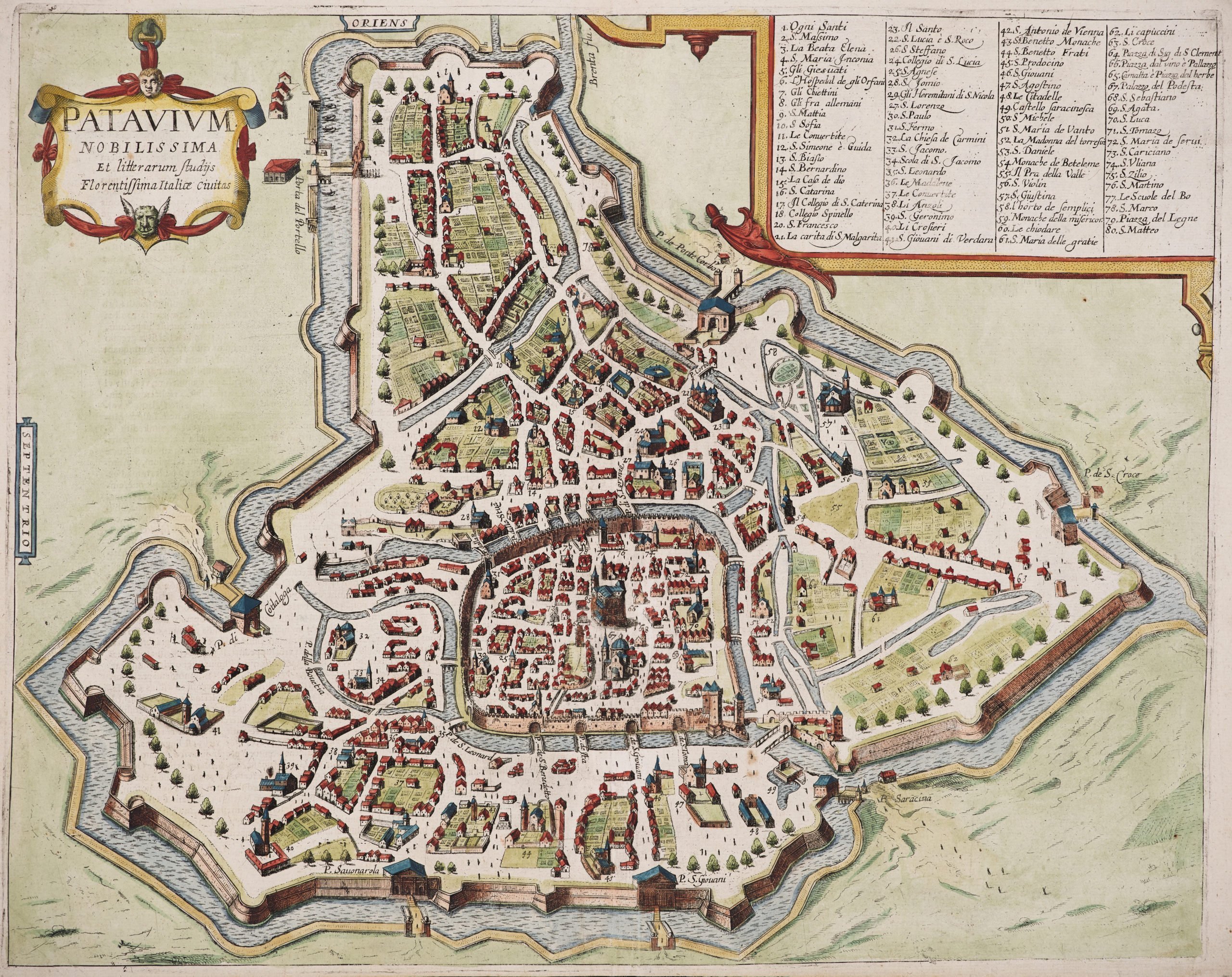
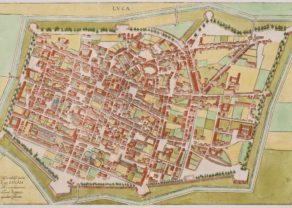
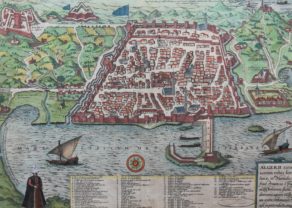
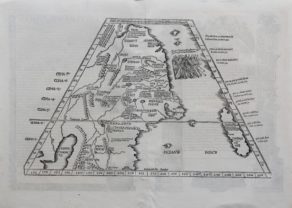
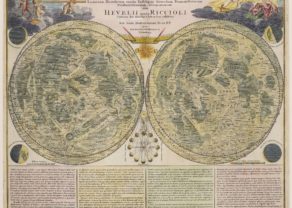
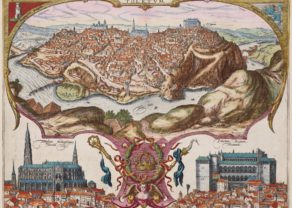
Padua – Padova
With key to 80 locations
Padua came under the rule of the Republic of Venice in 1405, and mostly remained that way until the fall of the Venetian Republic in 1797. It hosts a university which was founded in 1222, where later Galileo Galilei was a lecturer between 1592 and 1610.
Notable citizens include:
Livius (59 BC – 17 AD): historian
Andrea Palladio (1508 – 1580): architect
Giovanni Antonio Magini (1555 – 1617): astronomer, cartographer and mathematician
Galileo Galileo (1564 – 1642): mathematician, astronomer
Giuseppe Tartini (1692 – 1770): composer and violonist